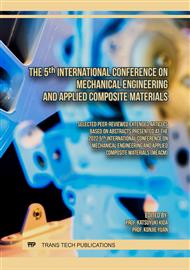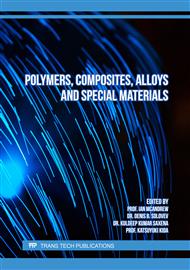p.101
p.107
p.113
p.119
p.125
p.133
p.139
p.151
p.157
Observation of Mode I Crack Growth Behavior in 4.762 mm Diameter-Silicon Nitride Ball under Compressive-Tensile Cyclic Loadings
Abstract:
Cyclic pressure fatigue tests of silicon nitride ball were performed in two phases. In the first phase, compressive and tensile stresses were applied to two cracks on the ball surface, respectively. In the second phase, tensile stress was applied to the crack that was applied to compressive stress in the first phase to grow. The effect of cyclic compressive stress on crack growth was investigated through this series of tests. The results are as follows. The ball did not fracture in either Phase 1 or Phase 2 tests. The crack did not propagate when the maximum compressive load of approximately 5 kN was repeatedly applied across the crack surface. In addition, the crack applied with compressive stress before tensile stress, and the crack which was not, both grew to about 520 μm during N ranging from 0 to 1.2×107 fatigue cycles. The crack applied with compressive stress before tensile stress at fatigue cycles N = 103 grew about 170 μm longer than the crack to which stress was not applied.
Info:
Periodical:
Pages:
157-162
Citation:
Online since:
April 2023
Authors:
Keywords:
Price:
Сopyright:
© 2023 Trans Tech Publications Ltd. All Rights Reserved
Share:
Citation:



